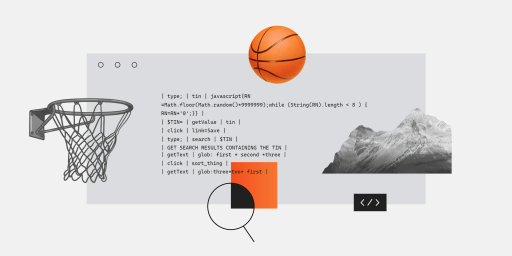All products go through a standard development process, advancing from one consecutive stage to another. The same is true for the development process. To control its settings and sub-processes, one requires diverse disciplines fulfilling specific functions — PM (project management), product development, QA & testing, service delivery, and support. These stages are interdependent and performed in continuous collaboration to improve their efficiency and output. So, what is ALM in software testing, then?
Application Lifecycle Management — Basic Concepts
ALM (Application Lifecycle Management) is a term for integrating all these functions in one entire lifecycle. Basically, ALM tools create a well-structured and flexible setting for cooperation between departments to accelerate and increase the effectiveness of the product development cycle and its particular phases.
If one needs a more extended definition of Application lifecycle management, then it’s also a set of instruments and methods for vital and efficient team collaboration. They increase visibility on each point of the software development life cycle and speed the transfer of tasks and groundwork from one team to another. Efficient application of ALM means increasing the chances for the software’s faster entry into the market and its enhanced quality. Moreover, ALM contributes significantly to each team member’s understanding of overall purposes and requirements.
Application Lifecycle Management Strategy
ALM involves all development and management operations front to back. However, product lifecycle management and ALM are not to be confused — the further is more convoluted and deals with a higher number of modifications in a short span.
ALM is the fruitful combination of the purposes and mechanisms of both business and software engineering. It is important to note that application lifecycle management is carried out through the use of efficient integrated tools. These tools facilitate requirements specification and compliance, product management, actual coding, QA, and release.
What Are the Common Stages in Application Lifecycle Management?
Commonly, ALM is divided into 3 phases, including governance or requirements, development (with the QA & testing sub-stage included), and operation & maintenance, though their number and components may vary. Let’s now consider some stages of application lifecycle management in detail.
Requirements
As the name implies, this step of application lifecycle management comprises gathering all kinds of requirements — legal, tech, and financial or general business ones. The stage also involves the actual design of an application in accordance with the conditions stated.
ALM tools must provide required functionality and adjust to the team’s processes simultaneously, especially as it concerns software development in strictly governed environments or process-oriented spheres. These workflow tools typically facilitate planning and estimates, whether for Agile or a classical waterfall project.
There is a separate design management stage in several classifications that helps enhance software usability and, therefore, customers’ satisfaction levels.
Development
This phase is for the idea to be embodied in the app itself. An application should also get tested, modified, and deployed. A team may repeat this algorithm of actions multiple times till the app is fully prepared for release.
While coding itself is usually not a component of ALM, it’s still the heart of application development. Therefore, the source code management functions must be incorporated into the ALM tools. This way, one can guarantee the trackability of compliance with the requirements during the tests and flaws correction.
SCM or software configuration management is sometimes considered a separate ALM phase for arranging, monitoring, and handling the code modifications, documentation, and other elements of the app development cycle.
QA & Testing
Are your main questions “What is ALM in software testing?” and its influence over the QA stage? Then you should know that the key feature that characterizes ALM and distinguishes it from traditional (or even obsolete) project management is QA and testing as an essential element of the software development process.
ALM tools stand out because they provide complete requirements’ traceability and timely validation. One of the essential ALM characteristics implies the active participation of the QA team in the earliest stages. Thus, testers can authorize test plans and fully understand the conditions from the outset.
The critical ALM test management characteristics include:
- Test progress tracking and controlling.
- Outlining app weaknesses and flaws.
- Regular inspection & confirmation of requirements.
- Incorporating with the current ecosystem.
Specific ALM tools and suites are consistent with automated testing for complex app development and multi-platform testing. Therefore, the ATM tool one selects must be concurrently compatible with automated and manual testing. So, the vital thing is to comprehend what kind of applications one requires for testing and ascertain that the preferred tool handles that type of testing.
Operations
Operations (with maintenance going right afterward) is the subsequent phase of ALM, in which managing a deployed software or app takes place. Another round of testing and resolving bugs also belong to the stage. Thus, targeting and prioritizing the following updates of the product are carried out as a result.
One more step of testing is aimed to confirm that the app aligns with users’ expectations and supporters’ (in the financial or marketing sphere) needs to move further in the lifecycle.
UX or maintenance may be defined as the final ALM substep, usually the most prolonged one. This phase is up to the customers who review the whole app, try it, and give feedback for further improvements.
How Application Lifecycle Management Works
As you see from the detailed description of stages, the application lifecycle management lets all team members, managers, and even sponsors and supporters take an active part in:
- specifying requirements, managing them, and ensuring their compliance;
- setting and monitoring all work processes;
- managing and adjusting coding, QA, and maintenance procedures;
- confirm that testing meets functionality, performance, usability, and security needs.
So, the ALM promotes proper, smooth, and swift arranging and administration of all application lifespan steps.
What Is the Advantage of Application Lifecycle Management (ALM)
ALM is undoubtedly advantageous for your dev team and business results. The four apparent benefits you’ll get if you use it right and apply suitable ALM tools are:
- fast-paced app lifecycle processes and releases;
- higher quality of the final product;
- enhanced traceability;
- better visibility.
Proving requirements compliance is not an easy task. Therefore, the ultimate strength of AML tools is the capacity to build a traceability matrix and monitor compliance at all stages as you develop. With ALM, teams also get total visibility. Everybody’s kept up-to-date concerning the procedures and knows what requirements are already fulfilled and how many remain.
Вottom Line
To sum it up, using application lifecycle management techniques and tools means making more effective release plans and launching a top-quality product in the shortest terms. With ALM, you and your team will see the big picture at every stage of the software development project, all due to the proper collaboration system, consistent information, and complete visibility. It will help you avoid inefficient task transfer between departments and unexpected bugs or non-compliance with initial requirements.



